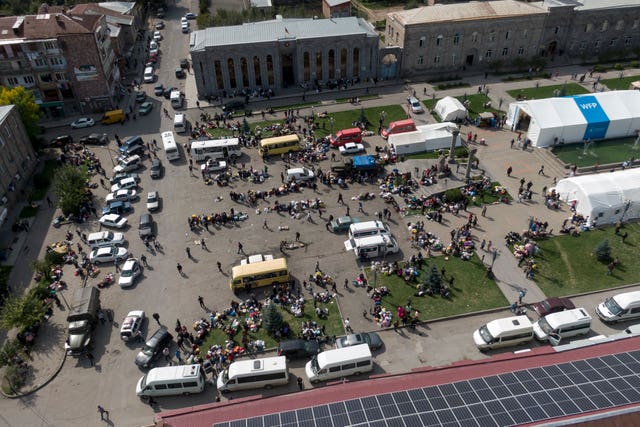An ethnic Armenian exodus has nearly emptied Nagorno-Karabakh of residents since Azerbaijan attacked and ordered the breakaway region’s militants to disarm, the Armenian government said.
Nazeli Baghdasaryan, the press secretary to Armenian Prime Minister Nikol Pashinyan, said 100,417 people had arrived in Armenia from Nagorno-Karabakh, which had a population of around 120,000 before Azerbaijan reclaimed the region in a lightning offensive last week.
A total of 21,043 vehicles had crossed the Hakari Bridge, which links Armenia to Nagorno-Karabakh, since last week, Ms Baghdasaryan said. Some queued for days because the winding mountain road that is the only route to Armenia became jammed.

The departure of more than 80% of Nagorno-Karabakh’s population raises questions about Azerbaijan’s plans for the enclave that was internationally recognised as part of its territory. The region’s separatist ethnic Armenian government said on Thursday it would dissolve itself by the end of the year after a three-decade bid for independence.
Mr Pashinyan has alleged the ethnic Armenian exodus amounted to “a direct act of an ethnic cleansing and depriving people of their motherland”.
Azerbaijan’s Foreign Ministry rejected the claim, saying the mass migration by the region’s residents was “their personal and individual decision and has nothing to do with forced relocation”.
In a related development, Azerbaijani authorities on Friday arrested the former foreign minister of Nagorno-Karabakh’s separatist government, presidential adviser David Babayan, Azerbaijan’s Prosecutor General’s Office said on Saturday.
His arrest follows the Azerbaijani border guard’s detention of the former head of Nagorno-Karabakh’s separatist government, State Minister Ruben Vardanyan, as he tried to cross into Armenia on Wednesday.
During three decades of conflict in the region, Azerbaijan and the separatists backed by Armenia have accused each other of targeted attacks, massacres and other atrocities, leaving people on both sides suspicious and fearful.
While Azerbaijan has pledged to respect the rights of ethnic Armenians in Nagorno-Karabakh, most are fleeing because they do not trust Azerbaijani authorities to treat them humanely or to guarantee them their language, religion and culture.

After six years of separatist fighting ended in 1994 following the collapse of the Soviet Union, Nagorno-Karabakh came under the control of ethnic Armenian forces, backed by Armenia.
Then, during a six-week war in 2020, Azerbaijan took back parts of the region in the south Caucasus Mountains along with surrounding territory that Armenian forces had claimed earlier.
In December, Azerbaijan blocked the Lachin Corridor, the only road connecting Nagorno-Karabakh with Armenia, accusing the Armenian government of using it for illicit weapons shipments to the region’s separatist forces.
Weakened by the blockade and with Armenia’s leadership distancing itself from the conflict, ethnic Armenian forces in the region agreed to lay down arms less than 24 hours after Azerbaijan began its offensive.
Talks have begun between officials in the Azerbaijani capital of Baku and Nagorno-Karabakh’s separatist authorities on “reintegrating” the region into Azerbaijan.
